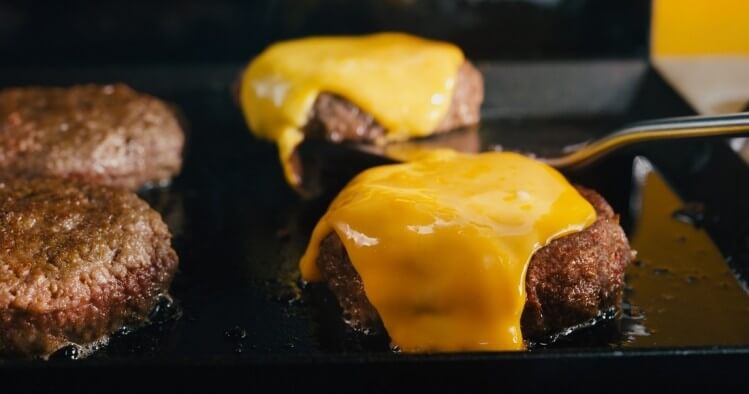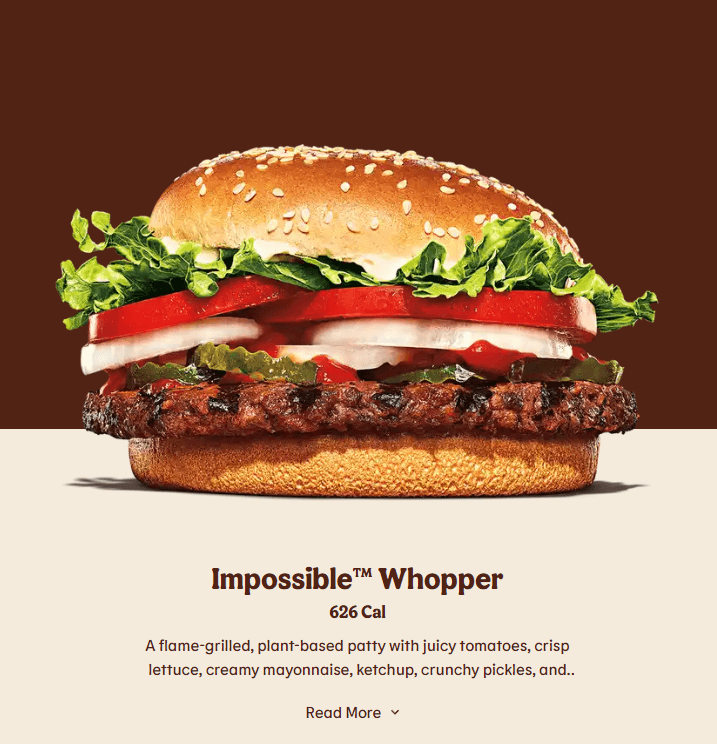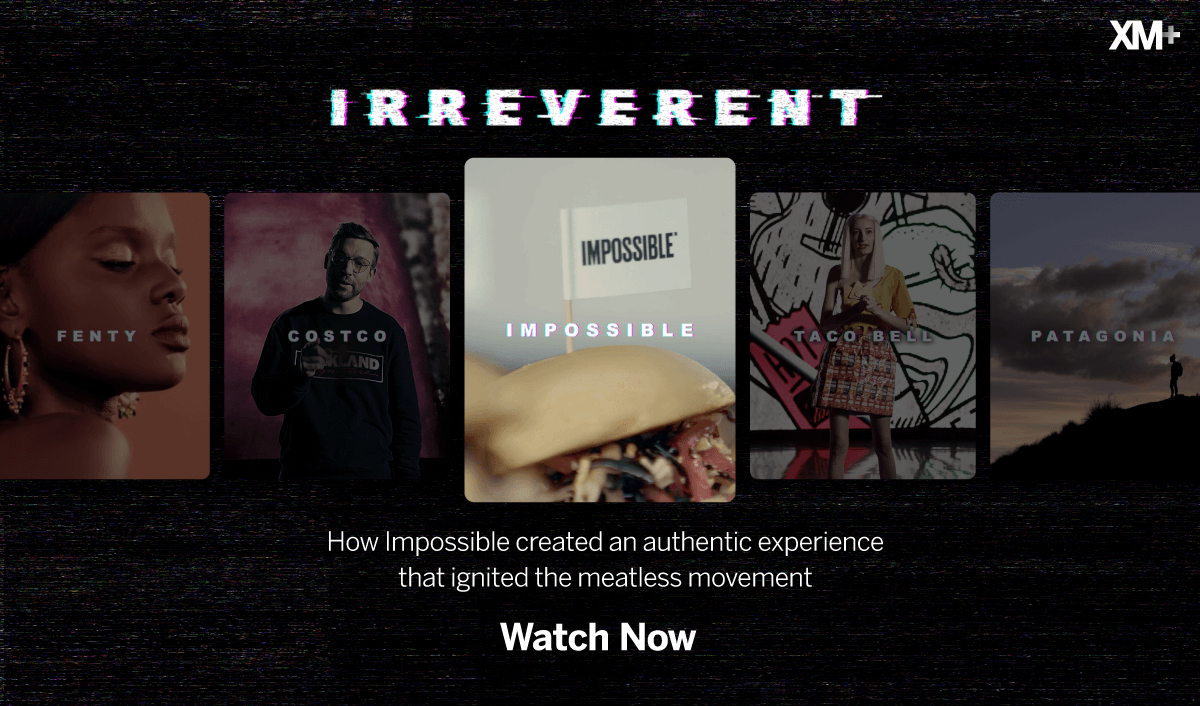At first glance, it’s hard to tell the difference. It looks like a burger. It smells like a burger.
And you know what? It darn well tastes like one too.
In 2016 — after 5 years of research and hundreds of iterations — the mad geniuses at Impossible Foods did something many of us would not have deemed possible in our lifetime:
They made a meat-free, plant-based burger that tastes, looks, and even feels like the real thing.
Enter, the Impossible Burger.
The burger that changed the market
When the Impossible Burger dropped in 2016, many were skeptical. After all, the pitch wasn’t for a run-of-the-mill vegan patty; the Impossible Burger bleeds, sizzles and tastes just like meat.
It arrived at a time when plant-based burgers were lacking in the sensory and experience department — they weren’t quite what people were looking for. Today, however, we’re well and truly in the age of plant-based foods.
But let’s turn back the clock to 2011. Back then, Impossible didn’t just want to create an alternative, it wanted to sell a real meat comparison.
And that required a different degree of science.
In many ways, the Impossible Burger represents a more sustainable, ethical future — that somehow we can still have and enjoy the taste of a beef burger, but without the catastrophic effects on the environment we live in.
Right now, beef is one of the most environmentally-damaging meats. Cows require an enormous amount of land and water, and are responsible for approximately 40% of global methane emissions.
So how do you create a burger that’s so close to the real thing without beef? Well, for that we have to start with the billion-dollar question:
What makes meat, meat?
Meeting the standard
Uncovering the secret of meat is something that gnawed at the scientists at Impossible for almost 5 years. It was what prompted them to try new combinations of sustainable compounds and run endless experiments to uncover the perfect recipe.
For Impossible, the first step was recreating the sensory experience of eating a burger. They wanted to capture everything from feel and smell to taste, touch and appearance. The goal? To not just attract vegans and vegetarians, but the most challenging and demanding critic of all: the meat eater.
It was no easy task. One of the most common complaints about veggie burgers is that they don’t have the same ‘feel’ as meat — so, they had to work on recreating the texture of real meat.
How food feels in your mouth (mouthfeel) is a fundamental element of how flavor is perceived — and it’s determined by proteins. Often, we reject food and drink that doesn’t feel right: think flat soda, grainy meal-replacement beverages or dry burgers. None of us want them!

The scientists, therefore, had to explore the properties of beef and what gives it that combination of springiness, chewiness and juiciness, all without compromising on its flavor or appearance.
At the same time, they also had to think about how the patty smelled and tasted. They analyzed the smell of meat, and then broke patties down to the molecular level and recorded the data.
They then turned to sources of fat — as with regular burgers, the cooking melts the fat inside the ground meat, giving the burger its taste, mouthfeel and juiciness. But instead of regular old animal fat, the scientists replaced it with coconut oil that, upon heating, melted and permeated through the patty.
Finally, after trying different combinations, running the numbers and recreating most of the meat-eating sensory experience, they arrived at the most important ingredient: Heme.
The magic ingredient: heme
Heme, short for hemoglobin, is an essential molecule that contains iron. It’s naturally found in high concentrations within the blood of humans and animals, but in far lower concentrations in plants.
It’s also what makes blood red, meat pink and is an essential part of why meat tastes great.
But sourcing Heme at scale from plants (e.g. soy plants) was impractical. Instead, Impossible chose soy — as well as yeast — to genetically engineer its own compound: leghemoglobin, also known as heme.
The process is intricate: Impossible uses synthetic biology, which is all about redesigning organisms, to create a yeast with the gene for soy leghemoglobin. First, the scientists grow yeast by fermentation. Then, they isolate the soy leghemoglobin (containing heme) from the yeast and add it to their products. It then combines with other micronutrients to recreate the delicious meaty flavor we are all so accustomed to.
As a result, Impossible can create heme at scale with the lowest possible environmental impact.
The science of experience
It’s interesting: Impossible never set out or pitched its burger as vegan or vegetarian.
What it did was identify a clear challenge in food (particularly meat) consumption and offered burger lovers a sustainable, ethical and no-compromise analog that they — and everyone else — can enjoy.
This isn’t just smart and responsible business — it’s empathetic, too.
Impossible isn’t telling people to give up the things they love and enjoy. It’s saying they can have their cake and eat it.
And it achieved all of this with science. It analyzed the most pertinent elements of the burger experience and recreated it without the meat. That’s just pure genius. Impossible understands and cares about its customers, the environment and the overall experience — that’s why it spent 5 years coming up with hundreds of iterations of the Impossible Burger.
Today, Impossible Burgers are commonplace. The Impossible Burger has gone from novelty item to a menu staple. You’ll find them in grocery stores like Walmart and Kroger, and fast-food restaurants like Burger King.
In fact, the Impossible Burger is so good, Burger King decided to keep Impossible’s branding and call it the Impossible Whopper.

(Credit: Burger King)
Impossible has made a name and a market for itself — and it’s not a stretch to say that the plant-based meat revolution we’re experiencing is in part down to the brand’s mad genius.
So the next time you fancy a burger but want to try something new that doesn’t compromise on the meat-eating experience, do yourself a favor: try the Impossible Burger, and tell us what you think.
Looking for more?
Explore why brands like Costco, Fenty, Impossible and Patagonia are loved by customers in the Irreverent docu-series. Dive into the future of the workplace experience in Work: New.0. And finally, hear from creators and brands who are paving the way for better and more human experiences, and the technology helping them to do it.

